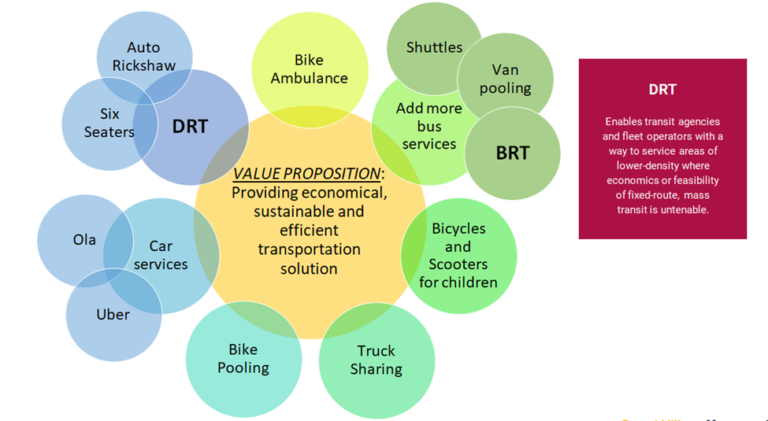Hypothesis
People living in rural areas need transport services to travel to markets, local towns, Schools, Banks, Hospitals, and other places. A lot of rural people don’t have access to transportation facilities. People in rural regions of India want a passenger service that is economical, frequent, predictable, safe, and can carry freight. Our main aim is to minimize the transportation problem in rural areas and provide the people living there with an economical, sustainable, efficient, and safe transport option.
Customer Segment
Customer archetype
Here we are trying to focus on providing a transportation solution to the people living in the rural areas of Meghalaya and trying to connect them with the other nearby villages, other necessary places in the village, and urban areas of Meghalaya. In order to provide this service, we have identified some customer archetypes which are important and play a vital role in providing transportation services.
● Startups
● Taxi Companies
● Tourism Companies
● Freelance drivers
Jobs to be done
Jobs to be done are the jobs to be actually performed on ground level. During the implementation of any of the solutions, we need to make sure that these jobs are considered and completed on time. There are some essential points in ‘jobs to be done’ that we thought are important.
● Collaborating with our Customer archetypes
● Service frequency
● Booking of service
● Route flexibility
● Pick-up and drop points
● Area coverage
● Vehicle size
● Price
● Financing of DRT and BRT
Pains
We have identified some pain points for this project. These pain points need to be considered and find a solution to these or try to minimize as much as possible.
● High initial cost
● Difficult terrain
● Weather conditions
● Demand planning
● Low fiscal and Safety regulations
Gains
There are also some gains which are important to the people using these services and to the people providing these services.
● Several transportation options
● Frequent access to transportation
● Cheap and economical options
● Could also generate revenue
● Safe and quick traveling
Market type and Market size
Our market type is basically the Front end customers who are going to use these services.


From the above figure, we can say that the primary occupation of most of the people living in Meghalaya is Labourers. This data is taken from the SVM platform. Farmers are the highest front end customers. They need to travel to daily markets, weekly markets, and other local places. Then other groups will be the students who will be using these services to go to school and universities. Then there are the patients and senior citizens who will be beneficial from these services. These are the main market types that we are going to focus on providing transportation solutions. We are targeting the age group between 11 to 60 years of age and these market types basically comprise 60% to 65% of Meghalaya’s total population.
Value Proposition

Explanation of Work done
Startups could be one important customer archetype here. There are a lot of startups who want to grow in the field of providing services. Government is trying to appeal youths to become the Job Creators through the startup India action plan. There are few startups who provide transportation solutions like Auto Rickshaws and small vans to commute from one place to another. There is a special startup from Azad Foundation known as “Women on Wheels” who provide the driving training to the women who can be independent, earn their livelihood and support their family. Taxi companies in Meghalaya could also be one of our important Customer archetypes. We can collaborate with them and encourage the youths in villages to drive the taxi around Meghalaya. This would provide the revenue not only to the Taxi companies but also to the youths driving the taxis. There are some tourism companies in Meghalaya. If the idea of startups and Taxi companies goes as planned, then we can collaborate with the tourism companies to provide transportation solutions to the tourists. This would not only attract tourists, but also create a great income for the people living in those areas. Last customer archetype we thought would be important is Freelance drivers. This idea is quite common in the western countries and it is a great source of revenue other than your primary source. Also, it is an economical and sustainable transportation solution.
The product features that we propose are as follows:
- Implementation of different types of DRT, namely:
a. Stationary line: Schedule the stops at predefined locations in an order at scheduled times which allows passengers to be informed and plan their trip.
b. Virtual line: Stops are scheduled only when the passenger makes a reservation. This is suitable for small networks.
c. Multi-zone zonal DRT: Useful for DRT with many zones. The overall DRT schedule is fixed but he ones within the zones are flexible.
d. Free agent: This option allows picking up passengers from wherever they are, be it their office or homes. This is suitable for larger DRT networks.
e. Feeder service zonal DRT: Suitable for locations with a timetable and fixed schedules like railway stations, intercity bus stations and airports.
- DRT for different passenger types
a. Personalized experience for passengers

b. Data-driven

c. Ridership and vehicle utilization

d. Increase in access to transport

Revenue Streams and ROI
- Expenses
a. Fixed Cost: Initial cost of 2 lakhs to 8 lakhs
b. Variable Cost: Monthly maintenance cost, Petrol, diesel or CNG costs. - Funding options
a. Bank loan at very low interest rates
b. Buy now pay later scheme
c. Joint venture - Pricing model
a. Monthly Subscription charges
b. Student discounts
c. Senior citizen discounts

We aim to have lesser prices than the ones shown in the above chart to avail the proposed DRT chart. This will be done by scaling up the model to reach more passengers.


